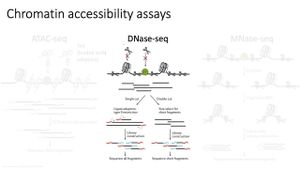Chinese artificial intelligence company DeepSeek has shaken the foundations of the tech world with its recent introduction of two advanced large language models, DeepSeek-V3 and DeepSeek-R1. This upheaval has sparked significant concern among American investors and tech giants alike, as they grapple with the potential ramifications of this new competition.
DeepSeek, founded just last year as part of the hedge fund High-Flyer, has rapidly advanced its position by claiming to have developed models comparable to OpenAI's ChatGPT. Reports from Axios indicate these models are cheaper to operate, drawing attention to the fact they could consume far less electricity than their American counterparts. Given the high operational costs often associated with AI technologies, this is no small feat.
Upon the announcement of DeepSeek's advancements, American chip maker NVIDIA experienced the largest single-day loss for any American company, shedding around $600 billion in market value. This market tremor has drawn extensive media coverage, resembling the fears during the Cold War era when the Soviet Union launched the first satellite, Sputnik, prompting the US to refocus its technological ambitions.
According to Microsoft CEO Satya Nadella, DeepSeek’s development is “super impressive” and suggests the need for the US to take these developments very seriously. The pressure is on American technology firms to reassess their own strategies amid fears of being outpaced by Chinese innovation.
Donald Trump, commenting during his presidency, noted this rise as a wake-up call for American industries, emphasizing the urgency for competitiveness. His administration took steps to bolster domestic AI initiatives, underscoring the seriousness of the situation.
Two models stand at the forefront of DeepSeek’s disruption: DeepSeek-V3 and DeepSeek-R1. The V3 model is said to be significantly faster than its predecessors and boasts capabilities ranging from code writing to translation tasks and logical reasoning. It reportedly performs on par or even exceeds OpenAI's most advanced models, such as GPT-4.
DeepSeek-R1, on the other hand, is particularly notable for its reasoning capabilities. Unlike many AI models, it was trained through large-scale reinforcement learning without the need for costly and extensive data center infrastructure. DeepSeek claims the training of R1 cost just $6 million, dwarfed by OpenAI's estimates of $100 million for GPT-4, which raises serious questions about American companies’ financial strategies.
The aftermath of DeepSeek’s launches has left many tech stock prices reeling. Major players like Oracle, Broadcom, and Alphabet have all registered losses, triggering broader market sell-offs as investors recalibrated their outlooks on the viability of American tech firms.
DeepSeek’s models are also notable for being open-source, allowing developers unrestricted access to employ and modify the technology, unlike the more closed systems offered by American firms. This move toward democratization is seen as revolutionary and could enable startups and smaller businesses to tap industrial-grade technology without substantial capital investment.
Many industry analysts are now calling for American companies to justify their high expenditures and potentially lower their prices to remain competitive. This growing price war highlights DeepSeek’s significant influence on the state of the global AI market.
DeepSeek's emergence has not only shaken investor confidence but has real implications on the future of AI technology. Experts predict this could sway the global balance of AI talent and technology, with potential shifts of the focus from the US to China. With increasing investments in AI research from the Chinese government and firms, the strategic response from the US will be closely watched.
President Trump’s response to the emergence of DeepSeek indicates urgent efforts to redirect American AI initiatives. This draws parallels to historical moments where shifts in technology prompted rapid governmental response to retain technological supremacy. The potential rivalry resembles the dramatic advancements witnessed during the space race, with DeepSeek similarly prompting American firms to adapt quickly.
While the immediate effects of DeepSeek’s introduction manifest as stock price drops and corporate panic, the broader picture reveals potential shifts toward greater accessibility of AI technology worldwide. The advancements made by DeepSeek show how innovation can arise from less conventional methods and financing strategies.
Experts, including Perplexity’s CEO, have noted the irony; desperation can lead to innovation, yielding more efficient results. Moving forward, the American AI sector must adapt strategies, not merely expand existing infrastructures to keep pace with their Chinese counterparts.
DeepSeek’s ripple effect signifies we may have reached a new chapter of technological progression, where cheaper and more accessible AI could redefine the industry, allowing small players to innovate and compete on global platforms.



